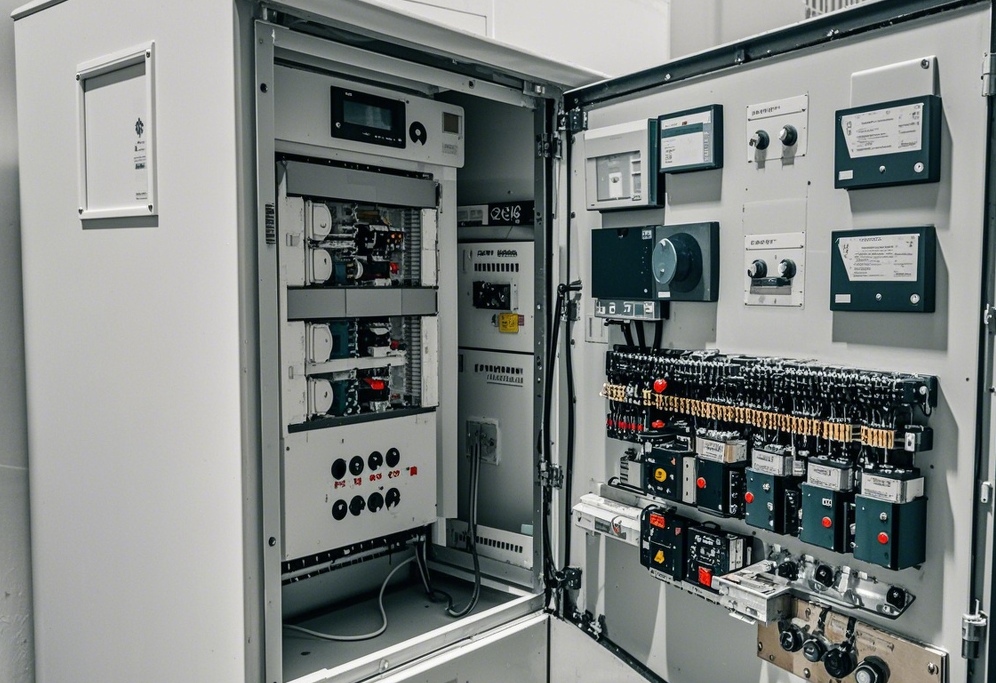目录
ToggleLow Voltage Cabinet plays a crucial role in our daily life for safely managing and distributing electrical power. They are specifically designed to handle low-voltage power systems, typically ranging between 50V to 1000V.
They meet the demands of homes, industries, and commercial spaces along with features like modular design, safety systems, intelligent monitoring, etc. Understanding the functionality and importance of the cabinet helps to keep electrical systems running smoothly and safely.
What is a Low Voltage Cabinet?
A Low-Voltage Cabinet is a specially designed box that holds and protects electrical components such as circuit breakers, Switches, etc. These parts help to control and protect electricity flow. You can use the cabinet outdoors which keeps the equipment safe from weather conditions like dust, rain, moisture, or extreme temperature.
Key Features of a Low-Voltage Cabinet
Low-voltage cabinets come with several essential features that make them highly functional in various environments. Go down and learn a few of them;
●Modular Design: The Low Voltage Cabinet has a modular design which means it consists of standard parts that can be easily combined. This design allows for flexibility and can also support feeder units that handle up to 250A and 630A.
●Intelligent Monitoring: It uses an eVA intelligent distribution cloud monitoring. You can clearly see the real-time information by using this system such as electrical currents, temperatures, and voltage.
●Safety Features: The cabinet incorporates insulation fastening technology. This technology helps to secure the connections. It also ensures thermal and high dynamic stability.
●Wireless Data Collection: It can also use electronic application technology to collect data on electricity usage and temperatures without needing wires. This wireless capability simplifies maintenance and boosts overall efficiency.

Types of Low-Voltage Cabinet:
There are different types of low-voltage cabinets. Every type serves a specific purpose based on the environment and electrical requirements. Let’s some of its main types;
●Modular Cabinet: This Cabinet consists of a standard module or interchangeable components. The design allows for easy integration of additional upgrades and components.
●Distribution Cabinet: It is used for electrical distribution in industrial and commercial settings.
●Control Cabinet: It contains Programmable Logic Controllers (PCLs) and relay panels. It facilitates the monitoring and operation of various machinery and processes.
●Electrical Enclosures: It is made from various materials such as plastic or metal and comes with different Ingress Protection (IP) ratings.
●Outdoor Cabinet: This cabinet is weatherproof and includes a heating or cooling system for temperature regulation and maintenance.
Where did the Low-Voltage Cabinet are Used?
Low-voltage cabinet used in various areas. Let’s discuss some of its uses in different fields.
●Home or Residential Buildings: In homes, it is used to distribute electricity to appliances, lighting, and other electrical devices.
●Industries: Industries rely on these cabinets to manage power in heavy-duty equipment, especially helps to control power flow to various heavy machines.
●Commercial Spaces: These cabinets are essential for managing power distribution across large spaces, especially in shopping centers, offices, and factories.
Why Low Voltage Cabinet Are Essential?
The low-voltage cabinet is important because it ensures the safety and efficiency of electrical systems. They hold various electrical components that help to protect them from dust and moisture.
All of the organization of the cabinet makes maintenance easier and helps avoid power failure. It prevents electrical shocks and fires by providing proper insulation and protection.
On the other hand, it can help in organizing electrical components which makes the maintenance and repairs easier and more efficient.
0